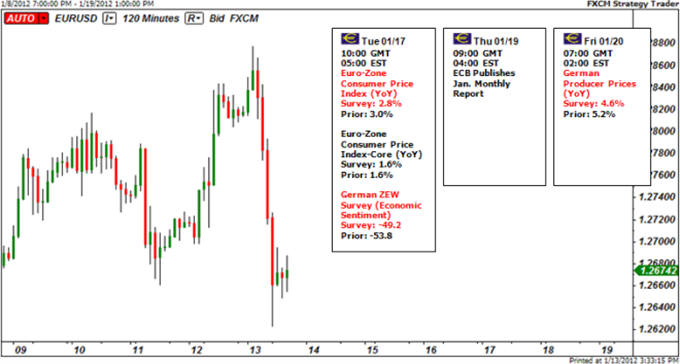Central Banking
Central Banks are institutions are utilized by
nations around the world to assist in managing their commercial banking
industry, interest rates and currency. The idea of a Central bank is not
a new one though. The first examples of a central banking authority
were seen in China with the first issuance of paper money nearly 1000
years ago. Other examples date back to the Knights Templar, looking for
credit to finance their crusades. Many of the processes being tested in
the past have been refined over hundreds of years of practice resulting
in today’s modern banking systems.
Examples of Central Banking today include the
Federal Reserve of the United States, European Central Bank (ECB), Bank
of England (BOE), Bank of Canada, and the Reserve Bank of Australia.
There sphere of influence of a central bank may range from a single
country such as the Reserve Bank of Australia or, represent policy
created for a region or group of countries such as the ECB. To show the
effects of Central Banking in a modern society, we will focus on the
Federal Reserve of the United States and their policy decisions.
The Fed
The origins of Central Banking developed in the
United States as far back as the Revolutionary War. In 1775 the
Continental Congress met with the intention of developing a national
currency and a plan to finance the developing war effort. The sole value
of the “Continental” relied on the future tax collection of the future
independent nation. As the revolution drew on with no conclusion,
overprinting and counterfeiting brought about the devaluation and
ultimate demise of the Continental currency. When the constitutional
convention of 1787 convened, one of the first priorities was the
discussion of the current financial system. As of 1791 the First Bank of
the United States was issued its original charter.
Much has changed since 1787! The Central Banking
system of the United States is now known as The Federal Reserve, or
simply the “Fed”. The modern Fed was created in 1913 by congress with
the intent of providing the United States with a safer and consistently
stable monetary system. The Federal Reserve achieves its goals by
conducting monetary policy, and supervising and regulating banks.

Bank Regulations
The primary reason for the creation of the modern
Federal Reserve System was to stave off banking panics in the United
States. This issue came to a head in 1907 during what has been dubiously
called the “Bankers Panic”. During this time, stocks on the New York
Stock Exchange fell nearly 50% from their 1906 highs. The end result of
this crisis is that many banks and business were forced to either close
or declare bankruptcy. As people worried they funds were unsafe at local
banks, they would rush to withdrawal funds creating a massive shortage
of capital.
The Federal Reserve is setup to avert a crisis such
as the one experienced in 1907. A system is set in place where short
term needs of small local banks can be handled if a “run” on deposits
occurs due to unexpected withdrawals or regional emergencies. The
Federal Reserve can easily loan money to small regional banks at a
nominal charge called the discount rate. Once a run has been met, banks
can then return their obligation back to the Federal Reserve. This
policy is one of many tools the fed utilizes assuring the solvency of
financial markets and bank depositories.
What Exactly is Monetary Policy
Monetary policy is another tool directly at the Feds
disposal to achieve its goals. Monetary policy describes the actions
that the Fed takes to control the money supply inside of the United
States. Depending on the state of the economy, the fed may select to
either take an expansionary or contractionary policy, with the supply of
money being influenced by two specific methods.
During times of economic slowdown, the Fed often
selects to peruse an expansionary policy in the market. This process
begins by expanding the monetary base and decreasing interest rates. The
theory behind expansionary policy is to make money more available to
banks and businesses in an attempt to increase growth and development.
As a byproduct of an expansionary policy, fundamental indictors such as
GDP are expected to grow and unemployment decline.
As the economy heats up, the Fed will consider
taking on contractionary measures. At this point, the monetary base may
begin to be restricted and interest rates can begin to increase. These
actions make excess investment capital scares, and place a higher
premium on lending. With less capital circulating, the economy is
expected to contract and slow down. During a time of contraction, GDP is
expected to decline and unemployment to contrarily increase.
Effects on Currency Rates
By controlling the money supply, and interest rates,
the decisions mandated by the Federal Reserve System have a direct
influence to the strength / weakness of the USD. Previously, we
discussed that when an expansionary policy is put in place, the monetary
base is increased and interest rates decrease. By supplying more money
to the market and banks than what is demanded values increase. This over
supply of funds creates a flood of cheap dollars onto the open market,
effectively diluting their value. The same holds true with Interest
rates in an expansionary environment. As interest rates move lower, it
becomes easier to borrow funds and the value of a currency tends to
decline.
The opposing scenario holds true when the Fed
assumes a contractionary monetary policy. A decrease in money supplied
on the open market make capital scare. Scarcity drives up value for
remaining funds and increases the value of currency. Increasing interest
rates also has the same affect. Higher rates make funds more expensive
to borrow, the barrier for lending decreases the availability of funds.
Again as capital becomes scarce, currency prices are expected to
appreciate.
What this Means to Traders
Knowing which policy cycle a central bank is taking
can be a fundamental asset to currency traders. One recent example of a
bank taking expansionary measures is the European Central Bank. One
policy the European Central bank has employed is the lowering of
interest rates. From their peak levels of 4.25% in 2008, the rates have
declined 3.25% to an effective rate of 1.00%. Factor this in with an
expanding monetary base as new debt is extended and refinanced, the Euro
has been in a state of decline versus most major currency pairs. Below
we can see the Euros descent against the Australian Dollar from 2008 –
present. So far this pair has produced a maximum trend of over 8000
pips. We can use this directional bias in the market to then proceed and
trade the strategy of our choice.
